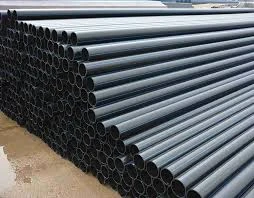Dec . 09, 2024 17:46 Back to list
PPR Pipe Fittings Comprehensive Guide for Efficient Plumbing Solutions
Understanding PPR Pipe Fittings A Comprehensive Guide
In the realm of plumbing and piping solutions, PPR (Polypropylene Random Copolymer) pipe fittings have emerged as a popular choice for both residential and industrial applications. Renowned for their durability and efficiency, PPR fittings offer a range of advantages that make them a go-to option for many contractors and homeowners alike. In this article, we will delve into the features, benefits, installation methods, and potential applications of PPR pipe fittings, providing a comprehensive look at why they are favored in modern plumbing systems.
What are PPR Pipe Fittings?
PPR pipe fittings are components made from polypropylene random copolymer, a type of plastic known for its resistance to heat, chemicals, and environmental stressors. These fittings are used to connect sections of PPR pipes, ensuring a secure and leak-proof plumbing system. Common types of PPR fittings include elbows, tees, couplings, reducers, and caps, each serving specific functions to facilitate seamless transitions and connections in various piping configurations.
Advantages of PPR Pipe Fittings
1. Durability PPR fittings are highly durable and have a long lifespan, often exceeding 50 years when used under proper conditions. They resist corrosion and do not degrade over time, unlike metal fittings which can rust and weaken.
2. Temperature Resistance PPR materials can withstand temperatures from -20°C to +95°C, making them suitable for both cold and hot water applications. This versatility is essential for plumbing systems in climates with varying temperatures.
3. Chemical Resistance PPR is resistant to a wide range of chemicals, making PPR fittings ideal for industrial environments where exposure to harsh substances is common. This resistance ensures that the integrity of the piping system is maintained.
4. Lightweight and Easy to Handle Weighing significantly less than metal piping, PPR fittings are easy to transport and install, reducing labor costs and effort during installation.
5. Low Thermal Conductivity PPR’s low thermal conductivity minimizes heat loss, making it an energy-efficient choice for both heating and cooling applications.
Installation of PPR Pipe Fittings
ppr pipe fitting

Installing PPR pipe fittings requires heating the pipe ends and fittings using a specialized fusion welding tool, which melts the material to create a strong and permanent bond. Here are the basic steps to properly install PPR fittings
2. Heating Use a fusion welding machine to heat both the pipe end and the fitting simultaneously. The ideal temperature for welding PPR is usually around 260°C.
3. Assembly Once the pipe and fitting have reached the necessary temperature, quickly insert the pipe into the fitting while ensuring they are aligned properly for a snug fit.
4. Cooling Allow the fused connection to cool for a few minutes, during which time the bond will set and create a permanent seal.
5. Testing After installation, always conduct a pressure test to ensure the system is leak-free and functioning correctly.
Applications of PPR Pipe Fittings
PPR fittings are used across various applications, including
- Residential Plumbing Ideal for cold and hot water supply systems, heating, and recycling lines. - Industrial Use Perfect for transporting corrosive substances, liquids, and gases in manufacturing plants. - Agricultural Systems Commonly utilized in irrigation systems due to their resistance to chemicals and long-lasting nature.
Conclusion
PPR pipe fittings represent a modern solution for piping needs, combining durability, efficiency, and versatility. Their resistance to heat, chemicals, and corrosion makes them an ideal choice for a wide range of applications in both residential and industrial settings. With easy installation procedures and a robust performance record, PPR fittings are set to remain a staple in the plumbing industry. For any construction or plumbing project, considering PPR pipe fittings can lead to long-term savings, enhanced performance, and peace of mind regarding system integrity. Whether you are a contractor or a DIY enthusiast, understanding the benefits and applications of PPR fittings is essential for making informed decisions in your plumbing and piping projects.
-
HDPE Natural Sheet: Durable, Food-Grade & Versatile Plastic Solutions
NewsAug.27,2025
-
Durable Glossy PVC Rigid Sheet | Premium High-Shine Panels
NewsAug.26,2025
-
Durable PP Rigid Sheet: Lightweight, Chemical Resistant Solutions
NewsAug.21,2025
-
PVC Grey Sheet for Extraction: Chemical Resistant & Durable
NewsAug.19,2025
-
Durable PVC Pipe Fittings for Plumbing & Irrigation Needs
NewsAug.18,2025
-
HDPE Steel Belt Reinforced Spiral Corrugated Pipe | High Strength
NewsAug.17,2025

